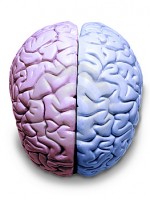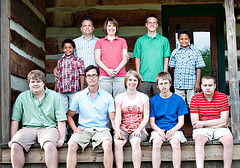This is a very old list I used when presenting about 20 years ago. Much of it is still accurate, but I want to go through this and add or clarify some things.
~cg (5/22/21)
Value-Based Environment
- Sleep differences
- Sensory differences
- Personal care resistance
- Anxiety/Fears
- Social lack of motivation
Skill-Based Guidance
- Sportsmanship
- Emotions
- Difficulty making choices
- Perfectionist, sensitive, fair-minded, critical
- Awareness
- Movement
Success-Based Support
- Resists change
- Transition needs
- Social initiation differences
- Socially ADD-like
A. VALUE-BASED ENVIRONMENT
1. Sleep differences
a. night owls
b. best creative work late at night
c. slow to get going in the morning
d. successful strategies
(1) schedule flexibility
(2) motivating early activity
(3) natural consequences
(4) effective alarm clocks
2. Sensory differences
a. clothing
b. hearing
c. nerves
(1) chewing
(2) tics
3. Personal care differences
a. clothing
(1) selection
(2) condition
(3) changing
b. hair care
(1) washing
(2) combing/brushing
c. successful strategies
(1) “most people/because” discussions
(2) appropriate items available
(3) information on correct use/style selection
4. Anxiety/Fears
a. accommodate
(1) physically
(2) interpreting for others
b. model adapting skills aloud
c. stories
d. alternative outlets
(1) chew gum/towel
(2) be creative/outside the box
5. “Lack of motivation” for social
a. loner
b. finds others “silly”
c. prefers strong interests/creative outlet
d. too much work
e. successful strategies
(1) validate and find those that “fit” their friendship style
(2) provide opportunities within interest
(3) role play/analyze/explain social skills
B. SKILL-BASED GUIDANCE
1. Sportsmanship
a. Difficulty dealing with emotion involved
b. Perfectionism adds to turmoil
c. Sensitivities creates inaccurate perception
d. Successful strategies
(1) explain/compare/admire to reassess perceptions
(a) emotions involved
(b) practice involved
(c) individual talents involved
(d) purpose for self for competitive play
(2) start with less stressful situations and build
(3) create individualized “rules” for competitive situations
(4) avoid competitive situations
2. Emotions: Anger, Crying
a. Difficulty dealing with own emotions involved
b. Difficulty dealing with other’s emotions involved
c. Sensitivities creates inaccurate perception or interpretation
d. Low frustration tolerance; perfectionismP
e. Successful strategies
(1) explain/interpret accurately emotions involved
(2) create emotion management plan
(a) help child recognize pre-anger, crying feelings
(b) come up with key word/phrase to remind him to go to safe place if child cannot do for self
(c) analyze stages and/or anger, crying outlets
(d) forward chain eliminating events
(e) ignore other events/heavily praise conquered event(s)
(f) review child’s feelings/let child own success
3. Perfectionist-Sensitive-Strong Sense of Fairness-Critical
a. Self
(1) BE VERY CAREFUL WHAT YOU SAY!
(2) use the team approach
(a) family goal
(b) individual goal under category
(3) “most people/because” discussions
(4) analyze others; compare to self
(5) use interests/goals to motivate hindering traits
(6) interpret others’ intentions
b. Toward others
(1) often shows up as criticism of others weaknesses
(2) bossy/parental (depending on birth order probably)
(a) reminds them too much of (weak areas) in self
(b) too emotionally the same
(i) help them become aware of mirror concept
(ii) talk about good/hard parts; ease up on self
(iii) discuss appreciation of learning curve/stages
(iv) heal past wounds/give value to past traits
(v) revisit successful skills
(vi) encourage mentoring versus critical
(3) negotiator – parental
(a) give him some wins
(i) after appropriate skills used
(ii) when reasonable
(b) provide details of any decision
(i) sometimes it’s logical and fair
(ii) sometimes it’s not logical and unfair
(c) validate child’s feelings/position
(d) acknowledge any successfully used skills
(4) producer – friends
(i) assess mix of personalities
(ii) suggest/educate about different needs
(iii) admire leadership traits
4. Lack of Non-verbal Communication Awareness
a. Hand gestures
b. Body postures
c. Facial/emotion representations
d. Successful strategies
(1) “practice” gestures (without using words)
(2) “practice” emotional representations on self/child
(3) “practice” eye movement communication
5. Movement (sensory/creative)
a. Thinking
b. Talking
c. Successful strategies
(1) “most people/because” discussions
(2) detailed information for social situations
(3) private time versus public time
C. SUCCESS-BASED SUPPORT
1. Resists Change
a. Physical surroundings/objects
b. People
c. Successful strategies
(1) PREPARATION! (information, then time, repeat)
(2) replace/update
(a) try it for a while
(b) don’t let them watch
(3) treasured objects
(a) hold on to old things for a while
(b) provide limited space areas to store and hold
(c) revisit to replace with new treasures
(4) moving/leaving
(a) discuss good aspects of change
(b) value and validate missed aspects of change
(c) make a plan to keep connections and do it – extra effort
2. Transition needs
a. Activity to activity
(1) provide schedule
(a) before transitions begin
(b) after each completed step
(i) review remainder
(ii) note give and take
(iii) commend appropriate successful skills
(c) after completed all steps
(i) review all previous steps
(ii) note give and take
(iii) commend appropriate successful skills
(2) warning times
(a) 30 minutes – help child to know what wants to accomplish before leaving
(b) 15 minutes – share in their good time
(c) 5 minutes – help child know how to prepare for finishing
b. Life phases
(1) teens
(2) driving
(3) dating
(4) adulthood
(5) successful strategies
(a) STAY CONNECTED!!!
(b) interpret behavior changes in others
(c) validate/support child’s initial reaction/decision to phase change
(i) stay (mourn/accept)
(ii) change (positives/reassure natural)
(iii) transition (timing/may go in and out of above)
(d) empower with information/skills
(e) discuss/interpret during times of doubt/insecurities
(f) trust their direction/process
(g) compliment choice of position/hard work of process
3. Making Choices
a. Usually because of tender heart
b. Gather information
c. Detach child’s responsibility/assure/ONLY IF YOU CAN!
(1) make decision for child – no choice
(2) make decision for child – child can change later
4. Lacks Social Initiation or Over-Initiates
a. Introverts – lacks social initiation
(1) seems “shy”
(2) uncomfortable in new situations
(3) unaware of typical format
(4) poor small talk skills
b. Extraverts – over-initiates
(1) seems “overbearing” or “rude”
(2) seems hyperactive (too close, too loud, too persistent)
(3) unaware of typical format
(4) poor small talk skills
c. Successful strategies
(1) start with smaller opportunities and build
(2) role play pragmatic social skills
(3) practice/explain/role play initiatory “openers”
(4) practice/explain/role play small talk
5. ADD-Like Socially (Awareness)
a. Eye contact drifts off when someone is speaking
b. Interrupts (changes topics)
c. Continues activity even when someone is speaking to them
d. Successful strategies
(1) “most people/because” discussions
(2) practice/explain/role play joining conversations
III. QUESTION AND ANSWER PERIOD
RECOMMENDED RESOURCES
The Highly Sensitive Child by Elaine N. Aron, Ph.D.
The Explosive Child by Ross W. Greene, Ph.D.
Raising Your Spirited Child by Mary Sheedy Kurcinka
The Out-of-Sync Child by Carol Stock Kranowitz, M.A.





